Museums, Spain's lesson. "Never closed in the second wave: we contribute to prosperity."
While museums halfway around the world closed last fall because of Covid-19, Spain was one of the very few countries that, despite theraging second wave, never thought of closing museums centrally, not even for a day. It was on Oct. 21 when Spain surpassed the one million daily count: it was the first country in Europe to cross the psychological barrier of one million, as well as the sixth in the world, after the United States, India, Brazil, Russia and Argentina. Italy, at that date, had less than half as many cases. However, the Spanish government led by Pedro Sánchez, despite facing what was then the heaviest situation in Europe, immediately ruled out the imposition of a new confinement, or lockdown as it may be: on October 25, a state of emergency was reinstated throughout the country (still in effect until May), a curfew was imposed throughout the country from 11 in the evening to 6 in the morning, modeled on the measure that had been taken in France a few days earlier, and gatherings of more than six people were prohibited.
Also on the same day, a system of “Niveles de Alerta Covid” (“Covid Alert Levels”), informally called the “Covid traffic light” by the press and populace, was put in place, with four different degrees of risk: 1 (low), 2 (medium), 3 (high), 4 (extreme). Each of the Autonomous Communities of Spain (which we can consider homologues of our regions) is periodically assigned a different level, exactly as is the case with the Italian risk zones or bands (which are four in Italy as well, as we all know by now: white, yellow, orange and red). One of the differences between Spain and Italy lies in the fact that, from the very beginning, in the Iberian country the restrictions on culture were not imposed in the same way throughout the country, but were made variable based on the level of risk. More importantly, not even the extreme level of risk theoretically entails the total closure of museums: this measure is assessed locally according to the severity of the situation. Spanish measures tie the level of risk to the capacity of cultural venues, which on percentages vary from Community to Community. Take, for example, the case of the Valencian Community, the fourth most populous in the country (the others are not too different): for low risk level, no limit for museums, libraries and archives, which remain open normally, and 75% maximum capacity for cinemas and theaters; for medium risk communities, the measures are similar to level 1, with the difference that museums, libraries and archives open at 75% capacity; for high risk, 50% capacity for all cultural and performing arts venues; for extreme risk, measures identical to Level 3 with the possibility of additional exceptional restrictions (in some Autonomous Communities, for example, total closure of museums, theaters and cinemas has been ordered). The measures, Sonia Zuñiga Lucas, a virologist at the Department of Molecular and Cellular Biology at the Autonomous University of Madrid, as well as a member of Spain’s Higher Research Council and the Spanish Society of Virology, explained to us last December, were taken with Spain’s epidemiological situation in mind. “In each country the situation is different,” she told us after we asked her for a comparison with Italy. “And the same goes for museum attendance. Making decisions is still complicated.”
So there are some museums in Spain that never closed their doors to the public during the second wave. And there is no evidence that museums contributed to the increase in cases. On the contrary, “to date,” Carlos Chaguaceda, director of communications at the Prado Museum in Madrid, confirms to us, “no outbreak has been detected or broken out in a museum or cultural institution in our country.” Moreover, there had been a sharp slowdown in the outbreak in Spain in December, with daily cases remaining stably below 10,000. There was then a resurgence of cases in January, the causes of which are still being debated, although the clues are mainly two: the general Christmas relaxation (in Spain the measures for the holidays were much softer than in Italy) and the effect of the so-called English variant. So much so that at the moment there is talk of a third wave, although in recent days a new slowdown in cases is taking place that bodes well for the weeks ahead.
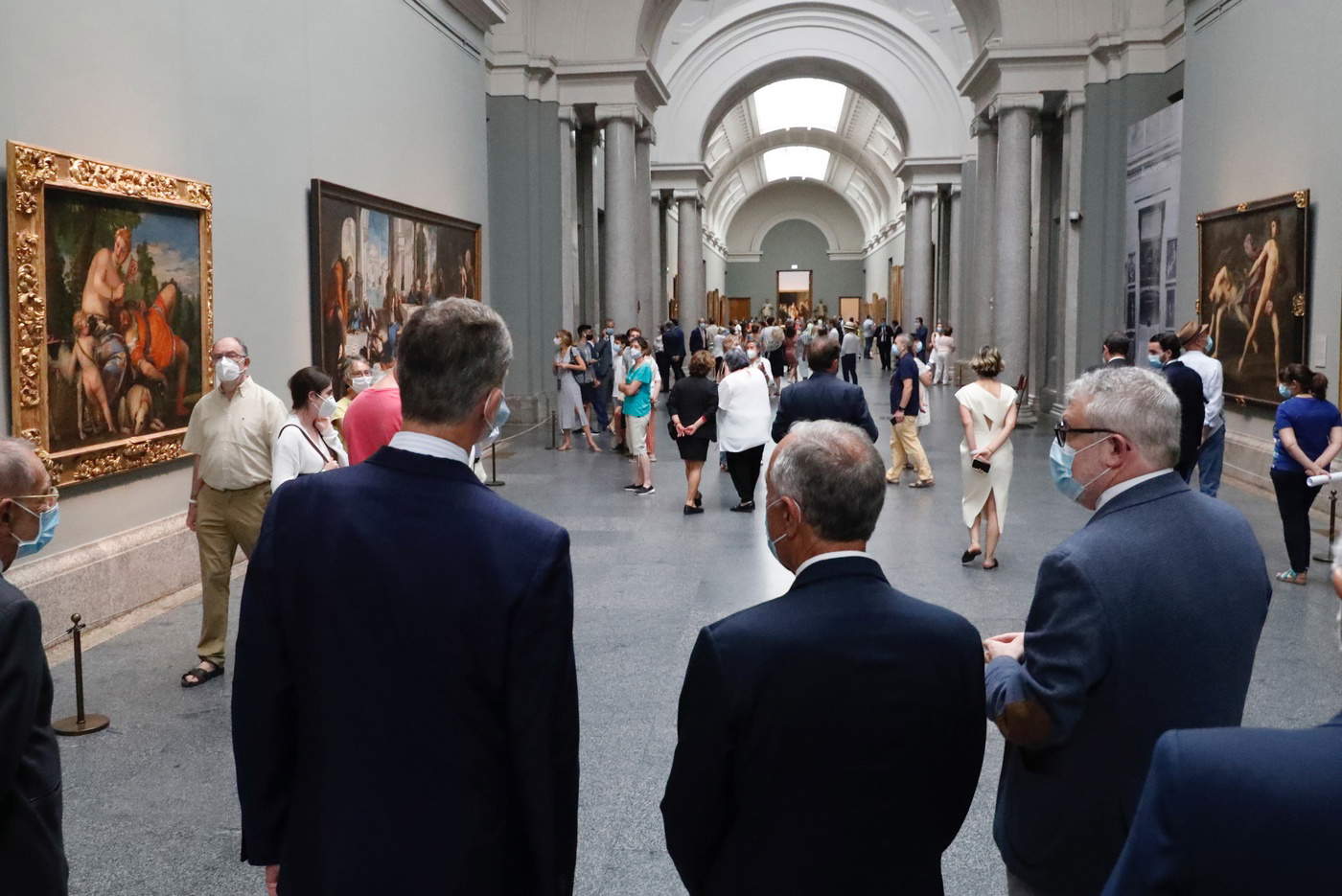 |
| The King of Spain, Philip IV, the President of Portugal, Marcelo Rebelo de Sousa, and the director of the Prado Museum, Miguel Falomir, visit the museum on July 20 more than a month after it reopened |
The practical reasons supporting the museums’ opening: reduced flows and strict security protocols
In any case, there was no general closure of museums as was the case in Italy and other countries (in France, for example, to this day museums have still been closed since October, amid protests from the cultural world). A decision, the Spanish one, dictated by reasons mainly related to the composition of visitor flows. “In Spain, considering the absence of tourists,” Sonia Zuñiga Lucas explained to us, “the decreases in the number of museum visits are so conspicuous that it is quite easy to keep the capacity reduced. In addition, many Spanish museums have put a lot of effort into activating extraordinary security measures: for example, they have improved ventilation systems.” Indeed, visitation continued to remain low throughout the fall. The Prado Museum, the most visited museum in the country as well as among the top 20 in the world, had 38,575 visitors in October, 41,521 in November, 39,408 in December, and 24,034 in January. These are averages comparable to those of the Uffizi in the first week of reopening in January, when the Florentine museum saw 7,300 people in six days, despite Saturday and Sunday closures, which do not exist in Spain. It is a sign that in any case under the Pyrenees the situation of heritage sites is considered perfectly manageable, and a sign that museums are not being stormed, but still remain an active cultural and social garrison that has not been missed by citizens.
The Prado also confirms that the museums have very stringent protocols in place, similar in any case to those adopted in Italy: “We have taken all the necessary measures and established protocols to be able to keep the museums open once the confinement phase, which began on March 14, 2020, has passed,” Carlos Chaguaceda explains. “We have established maximum capacities per day, per hour and per room, all visitors must respect the signs and spacing, the museum route is one-way to prevent people from crossing each other, the temperature of everyone who enters the museum is noted. In addition, ventilation systems have been improved at the Prado so that the air quality is similar to that of a hospital, according to industrial standards. We have an average of 1,000 visitors a day, and Saturday is the busiest day. To compare with 2019, the average number of visitors then was 8,500 per day.”
Same approach at the Thyssen-Bornemisza Museum, another of the capital’s major museums. The director, Evelio Acevedo, explains that the museum also undergoes audits that check the effects of security measures. “Since reopening in June,” Acevedo declares, “after the total confinement of the first wave of Covid-19, the central government has established very strict and precise protocols to be applied to museums. Museums are places where you can control spaces, access, groups of people. We have established time slots with very reduced access, we have digitized all information, we have applied specific protocols on hygiene and safety for both visitors and internal staff. In addition, we undergo audits that verify the effectiveness of our measures to ensure the sanitary safety of our spaces. Finally, we have put in place a large number of measures that have worked perfectly.”
And identical situation in the smaller museums, too, they let us know from the Museo de Cáceres, which before Covid was visited annually by more than a hundred thousand people (161,698 in 2019, collapsed to 60,120 in the year of the pandemic). Cáceres is a city in Extremadura, close to the border with Portugal: the city museum, which belongs to the regional government, closed for exactly three months during the first wave (March 13 to June 13), and was closed again on January 21 as the situation in Extremadura worsened. “During the second wave,” the museum press office explains, “museums remained open in most of Spain, albeit with reduced capacities (30 percent in our case). However, the third wave, which we are experiencing right now, has led several Autonomous Communities to close museums. The Museo de Cáceres is now closed again, since last January 21, as is happening in other regions. The state museums, on the other hand, remain open, although with very few visitors.”
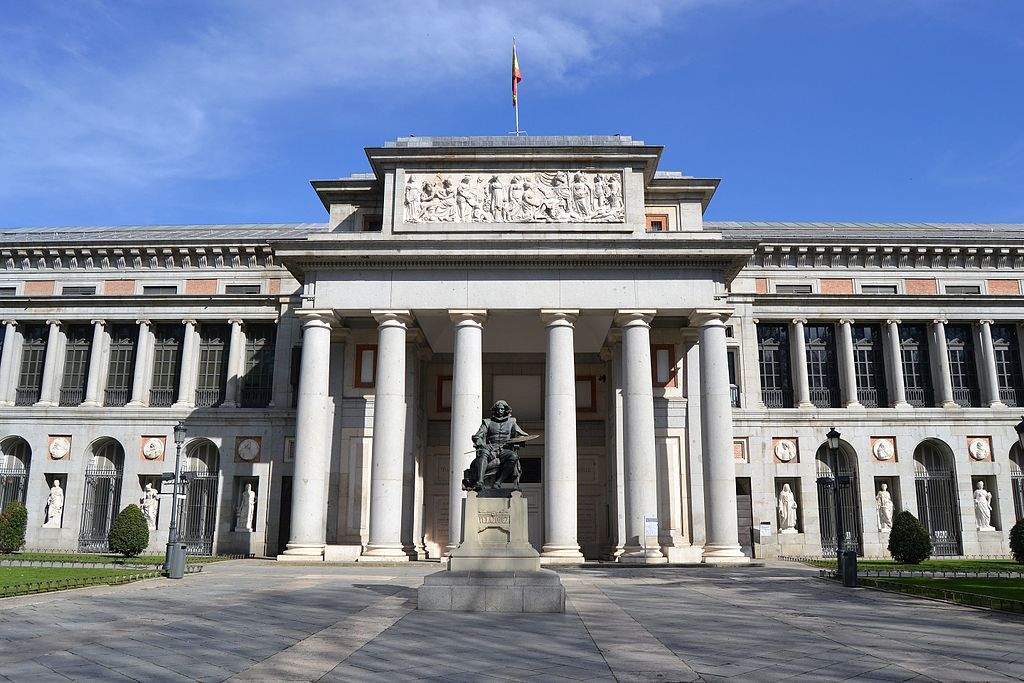 |
| The Prado Museum |
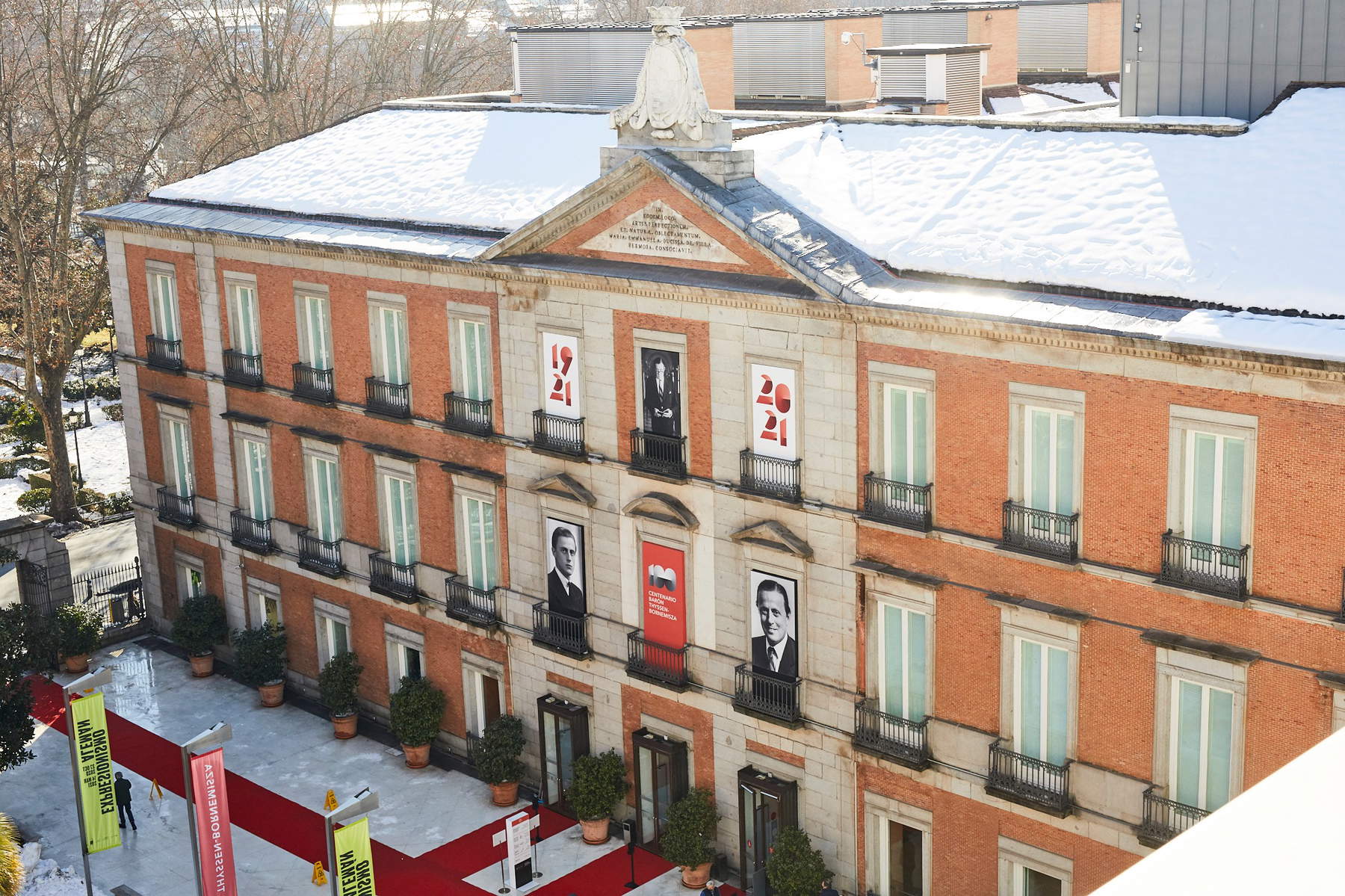 |
| The Museo Thyssen-Bornemisza |
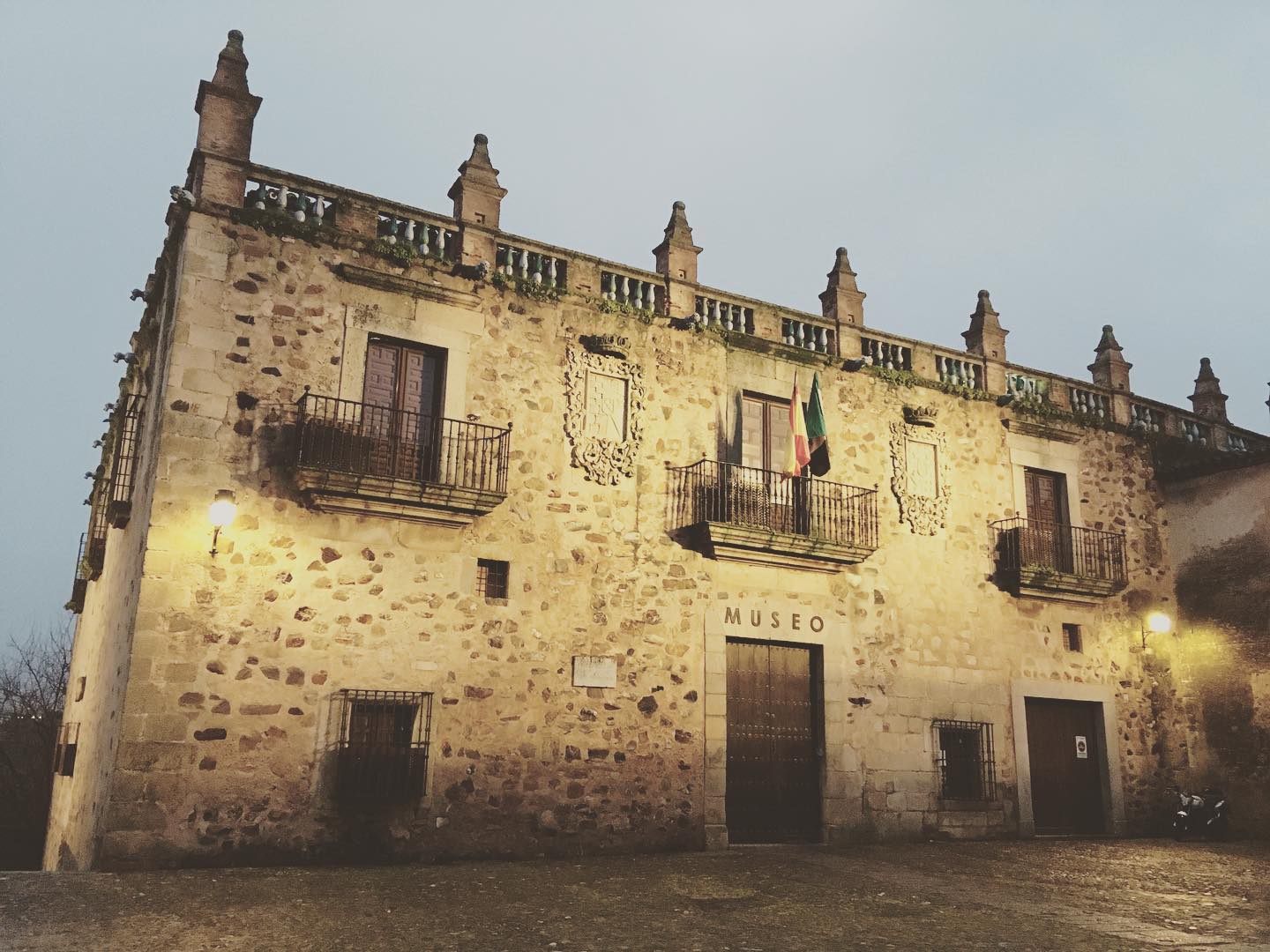 |
| The Museo de Cáceres |
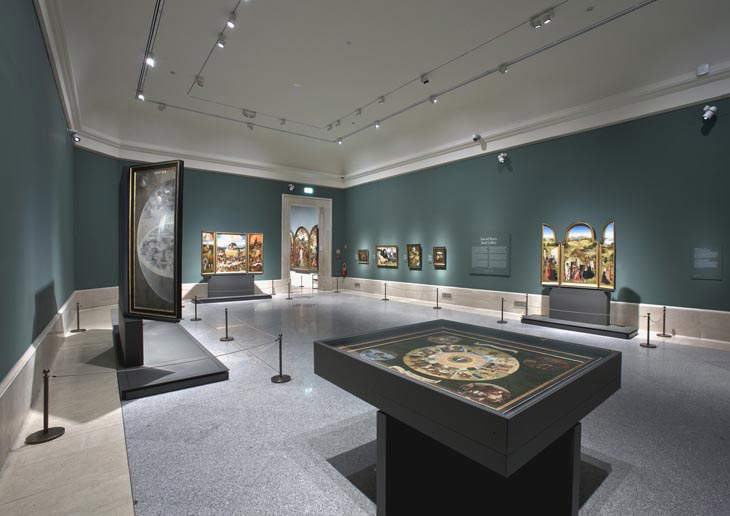 |
| Hall of the Prado Museum |
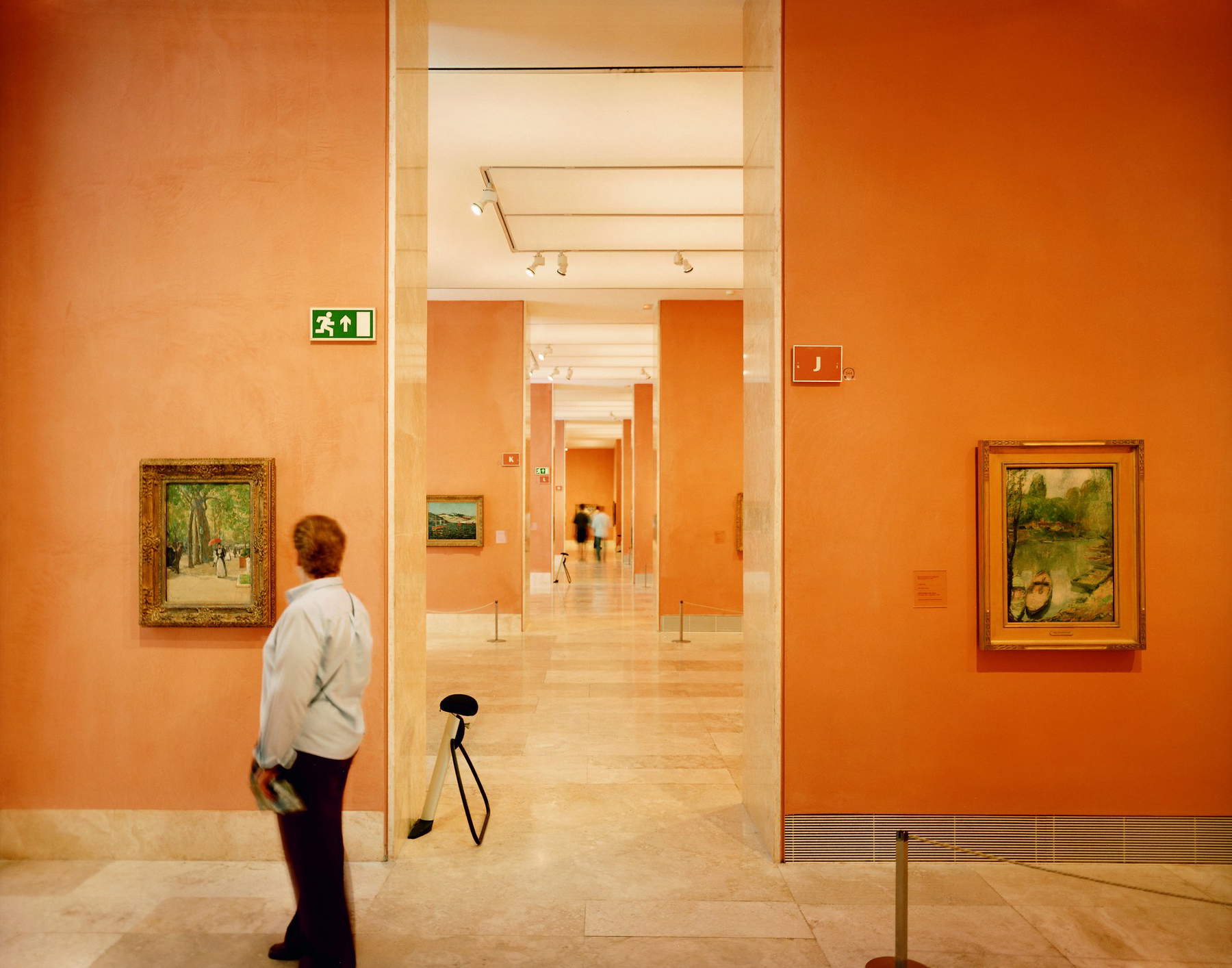 |
| Hall of the Thyssen-Bornemisza Museum |
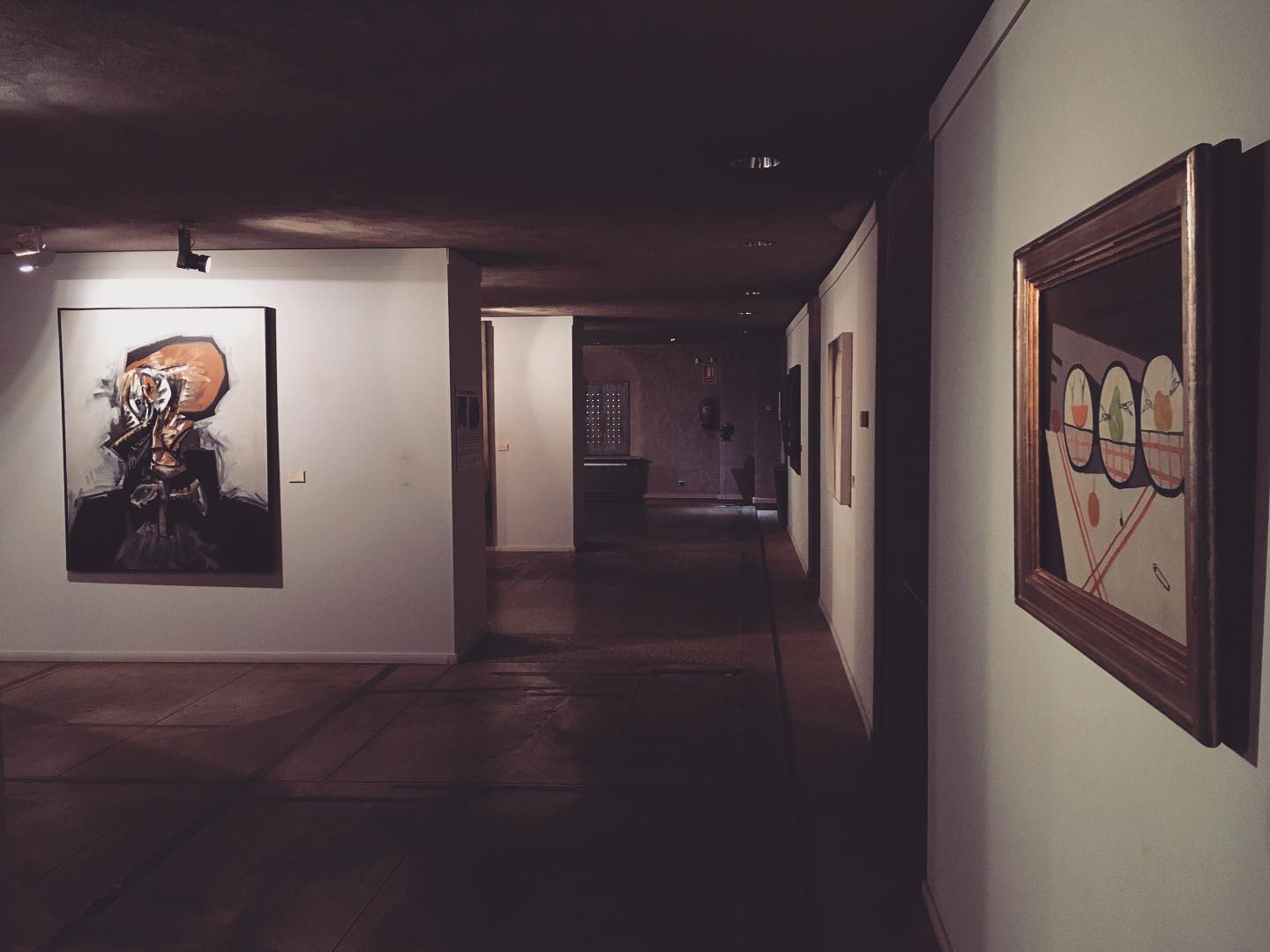 |
| Hall of the Museo de Cáceres |
“We are open to give a sign of hope and because we contribute to well-being.”
So as long as you can, therefore, you keep open: the Spanish government has not shown itself to be a quitter, and closing cultural venues is a last resort that is only evaluated locally if contagion levels become worrisome. Where possible, museums remain open. And this is not only for the practical reasons mentioned above, namely the substantial absence of contagion risk with few visitors and the strict protocols put in place. Perhaps even more important are the theoretical reasons: the chance to give a sign of hope and the belief, which is becoming increasingly widespread among those in the field and is now the subject of the most up-to-date museological debates, that visiting a museum contributes to the well-being of those who go there. “The Ministry of Culture and the museums,” Carlos Chaguaceda of the Prado in Madrid tells us, “believe that, in this difficult situation, staying open is a sign of hope, of normality, a way of offering an escape route, an opportunity for reflection and escapism for citizens, who have very limited options for movement. Staying open despite the difficulties is also an opportunity to reclaim the role of culture. Our contribution to everyone’s well-being is the possibility of offering citizens a place where beauty and art take priority.”
Of the same opinion is the director of the Thyssen-Bornemisza Museum. “It has been proven,” says Evelio Acevedo with conviction, “that museums are not places at risk, and we have safeguarded the possibility of continuing to fulfill our mission with regard to all our audiences, both those in attendance and those arriving through our digital offerings. In addition, cultural activity brings, psychologically, a healthy effect among people in times of crisis.”
The idea expressed by Director Acevedo, that museums are places where we do not get infected, is widespread, and it is also reiterated to us by the Museo de Cáceres. The closure does not defeat the image of museums as safe places: “museums,” they explain from Cáceres, “are not considered risky places: all have reduced their capacity, admitting 30 to 50 percent of the usual public, group visits have been prohibited, there are maximum hygienic precautions. Our museum can be visited only by wearing a mask and sanitizing your hands with hydroalcoholic gel before entering. The halls are disinfected every hour.”
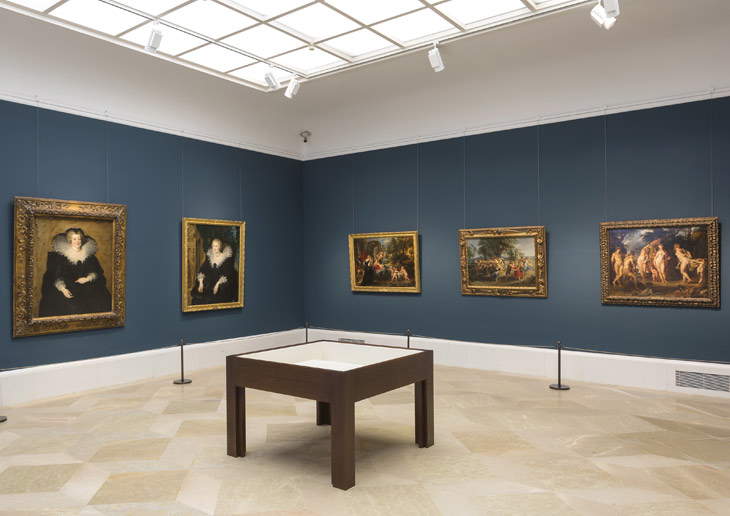 |
| Prado Museum Hall |
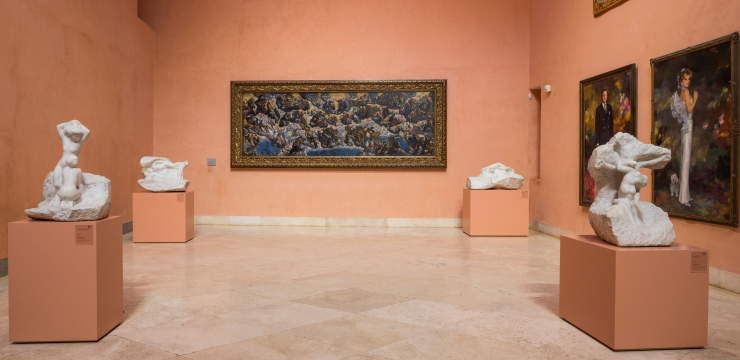 |
| Hall of the Prado Museum |
| <img src=“https://cdn.finestresullarte.info/rivista/immagini/2021/1562/thyssen-bornemisza-mondrian-lavoro.jpg” alt=“Museo Thyssen-Bornemisza, a restorer at work on a painting by <a href=”https://www.finestresullarte.info/arte-base/piet-mondrian-arte-opere-fondatore-neoplasticismo“>Piet Mondrian</a>” title=“Museo Thyssen-Bornemisza, a restorer at work on a painting by Piet Mondrian” /> |
| Thyssen-Bornemisza Museum, a restorer at work on a painting by Piet Mondrian |
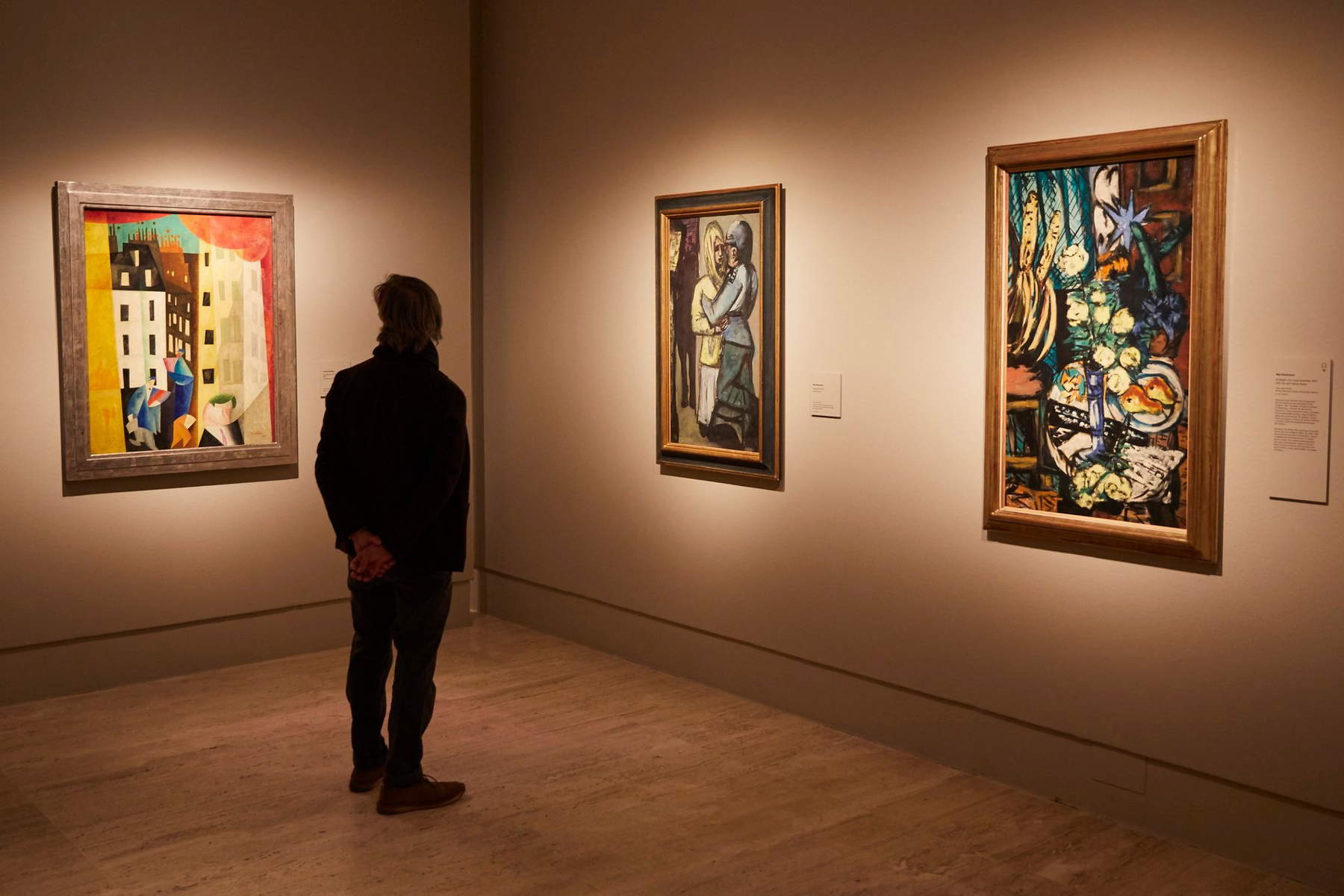 |
| Hall of the Thyssen-Bornemisza Museum |
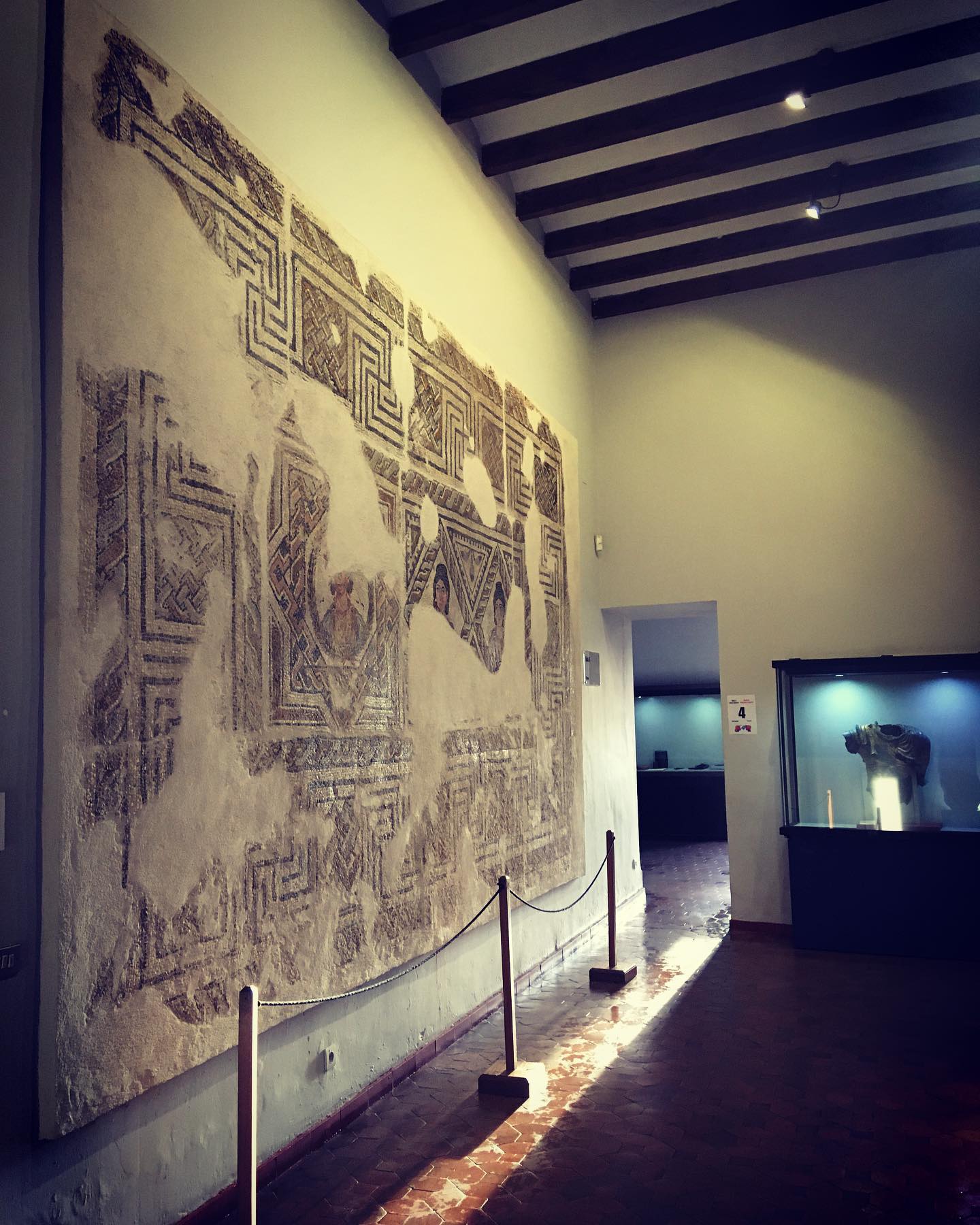 |
| Hall of the Museo de Cáceres |
The role of the government
The Spanish Ministry of Culture and Sports has gone to great lengths to strike a balance between the need to contain the epidemiological risk and the need not to close cultural venues. This has been the approach taken by Minister José Manuel RodrÃguez Uribes: to avoid closing indiscriminately, and to seek the right and proper balance. And according to Uribes, in office since January 13, 2020, Spain is succeeding. In early October, moreover, the ministry launched an institutional campaign, La Cultura es segura (“Culture is safe”), to affirm its character as a commodity of first necessity and to call on Spaniards to take care of theaters, cinemas, museums, libraries, participating wherever possible. “The minister of culture,” Chaguaceda explains, "was present at the reopening of the Prado to prove the importance of culture to the government. There is an excellent collaboration between the Prado and the government, and the museum is part of the La Cultura es segura campaign, which is a general vindication of the sector and an incentive to citizens so that, with all the necessary precautions and protocols, they continue to participate in cultural activities, such as those in cinemas, theaters, and dance."
The government has also helped cultural venues with refreshments to cope with losses incurred during the pandemic. “Usually,” explains the Prado’s communications director, “the museum is self-financing 70 percent (with tickets, sponsors, merchandise sales, and more), and the remaining 30 percent comes from public contributions. This year, public funds increased to compensate for the drop in income caused by the absence of international visitors, and so we were still able to come up with an extensive program of activities. In addition, this year, the government created a four-year line of credit, which we have been waiting for for a long time, allowing us to start the next expansion project of the Prado Museum, the ’Salón de Reinos’ of Philip IV, which will complete the complex of the institute’s buildings.”
The Thyssen-Bornemisza has also been supported by the government. “The Ministry of Culture and Sports,” says Director Acevedo, “has been very close to us, day in and day out, with great sensitivity in the face of all the difficulties that arose on a daily basis. It was not just about the closure of the museum: the overall impact of the pandemic forced us to substantially alter our most immediate exhibition programming, as well as any other type of initiative. Evidently, the actual economic situation has nothing to do with the budgets that have been approved but, in all ways, we have to adapt to this situation as much as possible: however, the economic supports from the Spanish government, which have guaranteed us extraordinary endowments to cover the deficit and to be able to start recovery plans, have been exemplary.”
In contrast, the Museo de Cáceres’ problems have been addressed by the regional government of Extremadura. “The regional government, as the entity that manages the museum,” we are told by Cáceres, “has activated digital resources on the web to disseminate the museum’s initiatives, especially in the area of didactics and dissemination of the collections.” In addition, again the regional government has helped the museum set up protocols: one-way routes, visitor quotas, use of surgical masks, and hydroalcoholic gel for all workers.
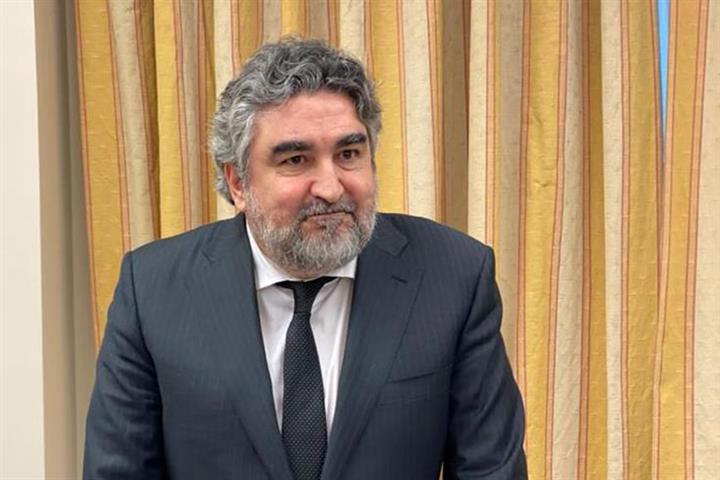 |
| José Manuel RodrÃguez Uribes |
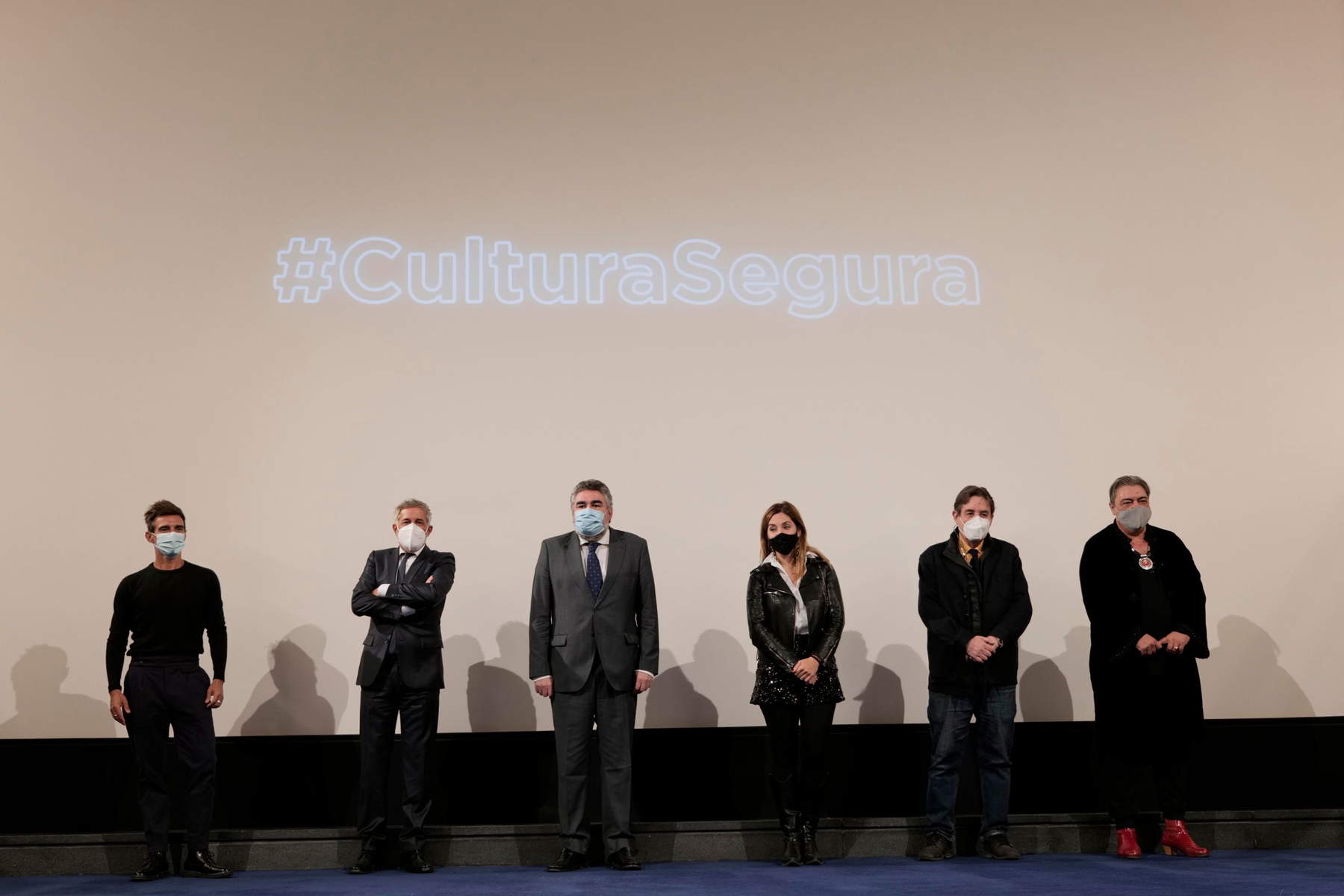 |
| The presentation of the La Cultura es segura campaign. |
Paradigm shifts for the future
If there is one aspect that the pandemic has underscored, it is precisely the need for culture. Ever since last March, everyone has been reiterating how one of the few things that was never lacking during the most acute phases of Covid-19 was precisely the contribution of culture: everyone (museums, artists, theaters, music, and so on) reinvented themselves, learned how to use digital tools, and invented new ways to reach the public so that culture would not be missed. And this is in spite of serious difficulties: for the future, therefore, it is hoped that governments will have more consideration for the sector.
“The situation from the economic point of view is complicated,” Chaguaceda concludes, “because the first source of income for the museum is ticket sales, and this source has shrunk dramatically, given the absence of domestic and international tourism, which together account for 85 percent of the regular audience. But we believe that this is the time to defend the value of culture beyond the quantitative figure: the Prado is considered the country’s premier cultural institution, and it is important that this symbolic value remains active in these complicated times.” The work, meanwhile, does not stop: on March 2, a major exhibition will open in the halls of the Madrid museum, featuring works by Titian, Rubens, Antoon van Dyck, and Diego Velázquez, among others, and an intense calendar of activities for 2021 is already ready.
Thus, for the future, the social value of culture should not be considered second to economic value. Evelio Acevedo makes this clear, acknowledging the importance of culture in both spheres: “The activity of cultural institutes in Spain,” recalls the director of the Thyssen-Bornemisza, “represents a direct contribution to the country’s GDP that amounts to almost 4 percent: that’s more than 700,000 direct workers. The educational, historical and pedagogical value of culture along with its economic value are the reasons to take care of it.”
Warning: the translation into English of the original Italian article was created using automatic tools. We undertake to review all articles, but we do not guarantee the total absence of inaccuracies in the translation due to the program. You can find the original by clicking on the ITA button. If you find any mistake,please contact us.




























